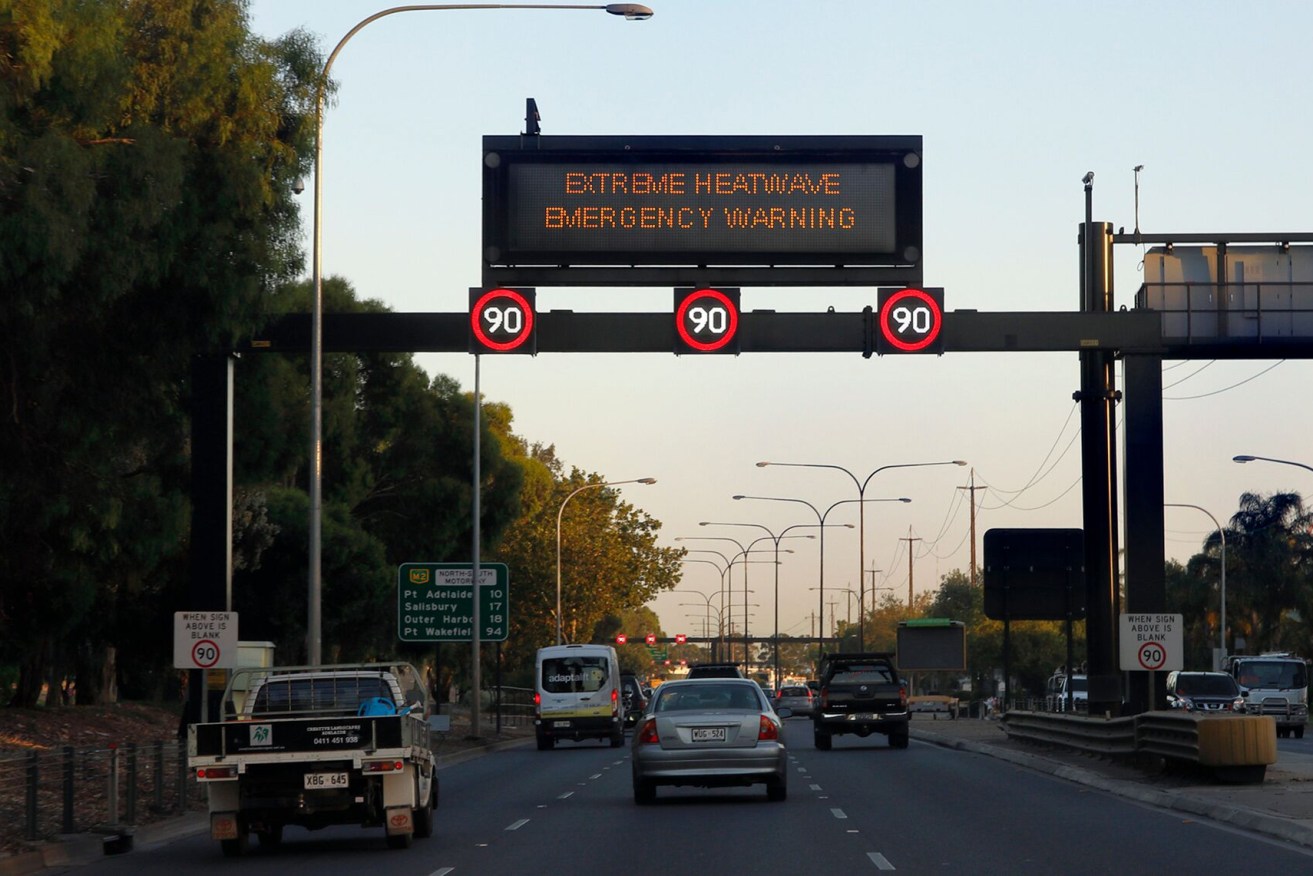In diesel we trust: Record-breaking heat ignites power fight
South Australia’s record-breaking temperatures have reignited the political battle over the state’s electricity grid, after the diesel generators purchased by the previous Labor Government were brought online by the market operator to meet high demand.


Extreme heat has tested SA's electricity grid. Photo: Tony Lewis/InDaily
The Australian Energy Market Operator (AEMO) asked for the generators to be switched on for the first time yesterday as heat records were broken in Adelaide and more than 20 locations across South Australia.
While Victoria suffered forced load-shedding, South Australia’s blackouts – which affected more than 25,000 properties – were due to transformer fuses tripping to avoid damage to SA Power Networks’ critical infrastructure.
The event has sparked a political fight about the technicalities of the system – a re-run of past political debates about South Australia’s statewide blackout and subsequent load-shedding (where properties are blacked out on purpose to avoid an even greater loss of supply).
Energy minister Dan van Holst Pellekaan and Premier Steven Marshall have both sought to make a virtue of the lack of “forced” load-shedding in yesterday’s extreme heat, while Labor insists its diesel generators had helped to prevent widespread blackouts across the state.
In the middle of this, AEMO was taking a more even-handed view, suggesting that the generators had been important to maintaining supply across a region of the grid which includes Victoria and South Australia.
van Holst Pellekaan said today that voluntary load-shedding by big corporate users like BHP, Nyrstar and GFG Alliance, had helped to keep the lights on for households and smaller businesses.
The Government had also shed load voluntarily.
“We faced the greatest challenge South Australia has faced in its history with regard to electricity and we managed to get through the day without any forced load-shedding,” he told reporters. “And that is in stark contrast to the previous government’s record of blackout after blackout after blackout.”
When asked whether the diesel generators bought by the Weatherill Government had saved the day, the minister insisted the South Australian grid had enough supply and that the generators were switched on to support Victoria.
“It was close, but we had enough,” he said.
When pressed about whether the generators had helped to avoid blackouts in SA, he said that electricity was “going in both directions” via the interconnectors between SA and Victoria.
The Premier told InDaily that South Australia still had a weakened grid, due to the previous Labor Government’s neglect.
He said the distinction between infrastructure failure and load-shedding was important.
“There are blackouts right throughout the year because of infrastructure failure; what we’re concerned about was we didn’t have load-shedding because of lack of capacity.”
He would not credit the lack of forced load-shedding to the diesel generators, which his government plans to lease to a private operator.
“No, we were instructed to prepare the diesel generator for a lack of capacity in Victoria… we’d still argue that because of policy failure over a decade, SA has a weakened grid [and] it will take some time to repair.”
Labor’s Tom Koutsantonis insists, however, that the generators prevented blackouts across the state – which reinforced the need for them to stay solely in the government’s hands.
“The switching on of the SA-owned emergency power plant justifies the former Labor Government’s decision to purchase this important asset for South Australians,” he said.
“It should now force the Marshall Liberal Government to immediately scrap plans to sell-off the plant.”
The back-up generators were bought as part of the Weatherill Government’s $550 million electricity plan in the wake of the statewide blackout and load-shedding in early 2017. The plan also included the Tesla battery facility in the mid-north.
van Holst Pellekaan insisted today that despite the Marshall Government’s plans to tender out the generators, the state would retain control. The generators would be leased under strict conditions so that they would be always available.
AEMO chief executive officer Audrey Zibelman believes the diesel generators are an important addition to the grid.
She told ABC Radio Adelaide that the principal sources of power yesterday – which was a day of low wind in Victoria and South Australia – were solar, gas and coal units.
When asked if it had been good sense to add diesel generators to the available mix, she replied: “What it shows is that, certainly, having the diesels available yesterday was very valuable to the system.”
Today, South Australia is exporting energy to Victoria as it faces extreme heat and failing coal generation.
AEMO’s Zibelman said that three generators, two at Yallourn and one at Loy Yang, had already failed in the lead up to the extreme heat, but a second unit at Loy Yang is expected to fail today.
Power is being imported from South Australia to help Victoria cope, but this won’t stop forced load-shedding this afternoon.
Up to 30,000 residential and business properties at a time will experience brownouts to free up 100MW of power in Victoria today.
“It’s all because, you know, we’re balancing the weather, additional heat is stressing the generators,” Zibelman said.
“We have one generator who has had some problems and they have been really struggling to stay on, but they’re having to reduce to protect the machinery.
“Other generators are also struggling, simply because of the heat. So, it’s all that in combination is what we’re confronted with this afternoon.”
Adelaide recorded its hottest recorded temperature at 3.36pm yesterday, with the 46.6C reading beating the city’s previous record of 46.1C set in January, 1939.
The reading also surpassed Melbourne’s 2009 record of 46.4C to claim the hottest temperature ever recorded in an Australian capital city.
Elsewhere in South Australia, Port Augusta recorded the hottest reading at 49.5C – the fourth hottest temperature recorded in South Australia.
The town was one of more than 20 locations to experience record-breaking highs, others including Ceduna at 48.6C, and Port Pirie and Whyalla at 48.5C.
– with Tom Richardson and AAP




